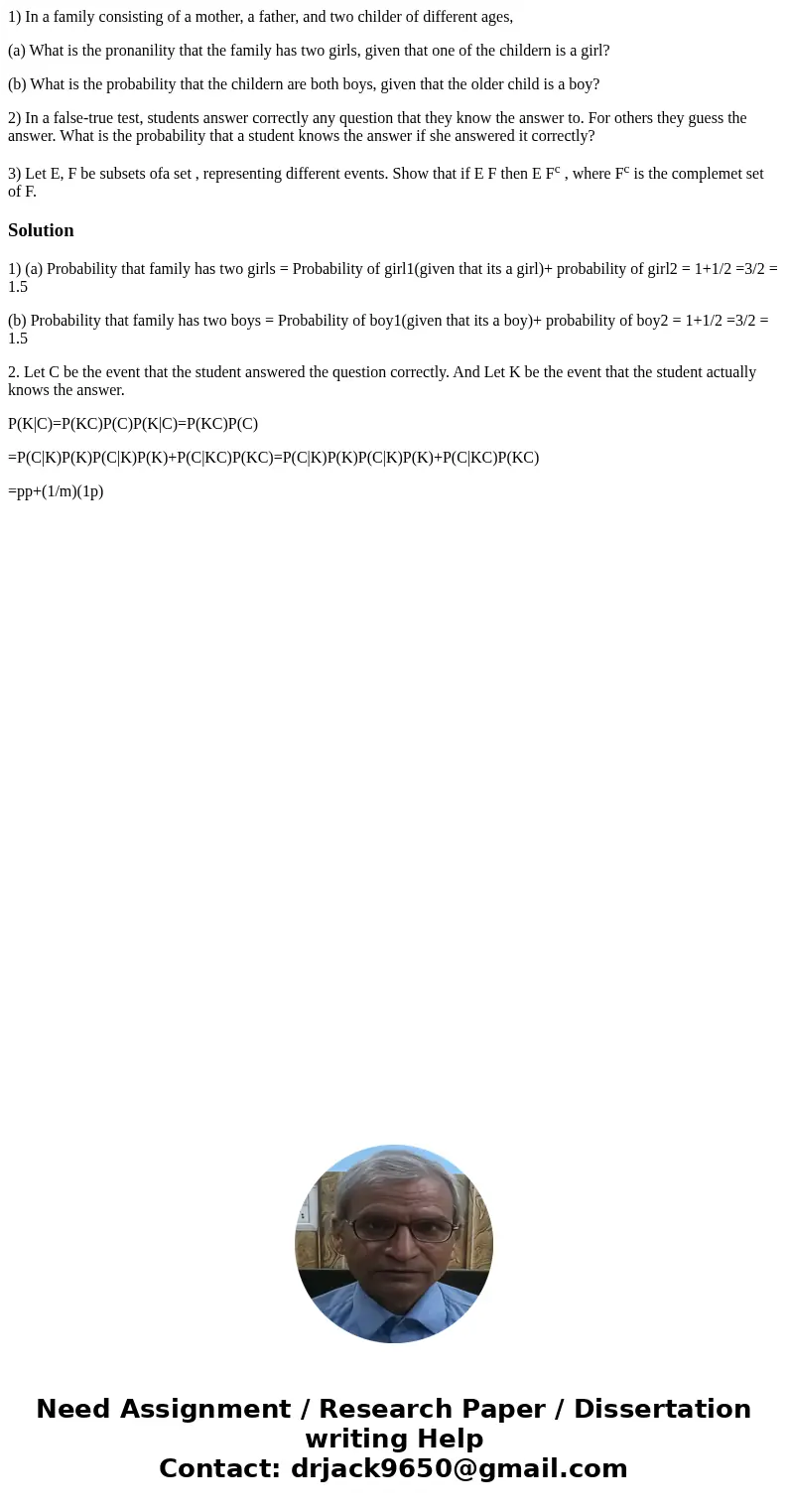1 In a family consisting of a mother a father and two childe
1) In a family consisting of a mother, a father, and two childer of different ages,
(a) What is the pronanility that the family has two girls, given that one of the childern is a girl?
(b) What is the probability that the childern are both boys, given that the older child is a boy?
2) In a false-true test, students answer correctly any question that they know the answer to. For others they guess the answer. What is the probability that a student knows the answer if she answered it correctly?
3) Let E, F be subsets ofa set , representing different events. Show that if E F then E Fc , where Fc is the complemet set of F.
Solution
1) (a) Probability that family has two girls = Probability of girl1(given that its a girl)+ probability of girl2 = 1+1/2 =3/2 = 1.5
(b) Probability that family has two boys = Probability of boy1(given that its a boy)+ probability of boy2 = 1+1/2 =3/2 = 1.5
2. Let C be the event that the student answered the question correctly. And Let K be the event that the student actually knows the answer.
P(K|C)=P(KC)P(C)P(K|C)=P(KC)P(C)
=P(C|K)P(K)P(C|K)P(K)+P(C|KC)P(KC)=P(C|K)P(K)P(C|K)P(K)+P(C|KC)P(KC)
=pp+(1/m)(1p)

 Homework Sourse
Homework Sourse